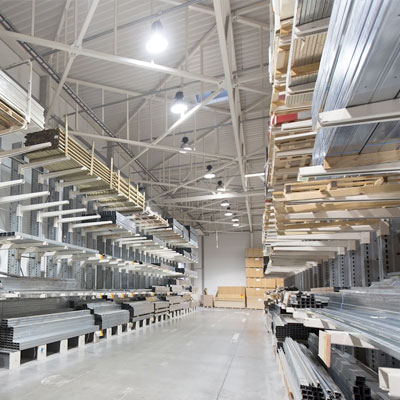Grade 304 is an austenitic steel which has chromium and nickel as key elements. The inclusion of these elements mean that 304 steel is extremely resistant to corrosion as well as being easy to weld and form. The austenitic structure of this steel means that it can be deep drawn without the need for intermediate annealing and annealing is not required following the welding of thin sections.
Key Attributes of 304L and 304H Stainless Steel
The two key grades of 304 stainless steel are 304L stainless steel, which is the low carbon form, and 304H stainless steel, which is the high carbon form. 304L has a maximum of 0.03% carbon and 304H has between 0.04 and 0.1% carbon which affords it a better strength at higher temperatures.
304 stainless steel does not tend to be a grade for use in very high temperatures, however, it resists oxidisation in constant use up to 925oC and in intermittent use to 870oC. Using 304 stainless steel at temperatures above 425o C can create carbide precipitation and interangular corrosion.

However, 304L has a lower carbon content which means it is less likely to result in carbide precipitation when used at higher temperatures. 304H has significantly higher strength at increased temperatures meaning it is frequently selected when both high-temperature resistance and corrosion resistance are necessary. Often 304H is used in flue gas chimneys in which gases can condense to form aggressive, acidic liquids.
304H stainless steel is frequently used in the food industry due to its resistance to corrosion and is often the material of choice for use in the dairy industry. It is also often used in good quality cutlery and is described as 18/8 referencing the percentages of chromium and nickel. Additionally, it is frequently formed into troughs, sinks and other kitchen appliances and can be spun easily meaning it is well-suited to the production of pots and pans.
304H stainless steel is frequently used in fresh water service as it has a hard oxide layer which does not promote bacterial growth, which can impact fresh water. It is also often used in architectural applications, owing to its low cost compared with other materials.
The heat resistance of 304H stainless steel means it works well in heat exchangers and will not crack or corrode at temperatures between 500°C and 800°C. Additionally, it has a high tolerance for extreme thermal conditions and can be used for situations which cannot be accessed easily as it is a low maintenance material.
At Masteel, we stock both 304L and 304H stainless steel for use in a multitude of applications. If you would like to find out more, contact us today.
Our Dedicated UK Stainless Division

Based in Wolverhampton (United Kingdom), D.S. Willetts is our dedicated stainless steel division in the UK. D.S. Willetts specialises in the supply of stainless steel plates and profiles. In-house services offered by D.S. Willetts include laser, waterjet, plasma, plate saw, band saw, and guillotine cutting.
Stocked Grades
- 304/304L/304H
- 316/316L/316H
- 310, 321, 347/347H
- Duplex 1.4462
- UNS S32750 & UNS S32760
For more information on the capabilities of D.S. Willetts, please visit the D.S. Willetts website – www.dswilletts.co.uk
